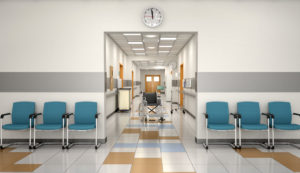Essential Budgeting Tips for Successful Healthcare Architecture and Design
With a $658.3 billion investment in 2022 aimed at bolstering healthcare architecture, design and construction, the COVID-19 pandemic has undeniably accelerated the global push towards a more resilient medical system.
This surge is not just a reaction to the pandemic; it’s also a response to the growing demand for robust services amid the growth of chronic diseases and the increasing number of senior citizens. Specifically, in India, the construction of eleven new medical facilities in the national capital signifies a nationwide effort to upgrade healthcare infrastructure.
However, the road to enhancing these facilities is not without its bumps. Inflation, labor shortages, and supply chain disruptions pose significant challenges to the healthcare construction boom.
So, how do we navigate these hurdles to ensure that the expansion of healthcare facilities doesn’t just start strong but also crosses the finish line within budget?
The importance of effective financial planning and project management cannot be overstated. Beyond design, we also need to look at the resources – ensuring theyare utilized efficiently and budgets are meticulously followed to prevent any unwarranted cost overruns.
Kshititi Nagarkar, Architect at Shree Designs
With this blog, we will explore how to budget effectively for healthcare facilities, while sharing practical strategies for managing funds efficiently, making sure every rupee is put to good use.
4 Budgeting Tips for Healthcare Construction Projects
Financial planning for healthcare facility design and construction relies on precision, foresight, and adaptability.
a) The Importance of Detailed and Flexible Budget Plans
Did you know? While the average construction project faces cost overruns of about 28%, healthcare building projects experience a much narrower range of overruns, from just 0.58% to 19.62%. Cost overruns occur when the actual expenses of a project exceed the initial budget estimates. This is often due to unforeseen challenges during the design and planning stages, including technical difficulties and administrative hurdles that lead to design changes and more resource allocation.
A well-thought-out budget plan not only serves as a financial roadmap for the project but also ensures that all aspects of the construction are accounted for from the outset. A few features include:
- Phased Construction: Adopt phased construction to distribute costs more evenly and adjust as budget and project needs evolve.
- Operational Efficiency: Prioritize operational efficiency in the design phase to cut long-term operational costs, with a focus on energy efficiency and sustainability.
- Long-term Planning: Design with flexibility to easily accommodate future expansions or modifications, minimizing the need for costly reworks.
- Budget Management: Implement regular budget reviews and adjustments to respond to project changes promptly, maintaining financial control and project integrity.
b) Allocating Contingency Funds
Healthcare architecture and design projects come with inherent risks, and a contingency reserve acts as a safety net against some of these unforeseen events.
Setting aside contingency funds is a fundamental part of managing risk in construction projects. Project managers include a contingency in the budget to handle the “unknowable unknowns,” —expenses expected to occur but with uncertain costs.
Contingency funds are designed to cover unexpected construction costs, such as:
- Delays caused by abnormal weather
- Cost overruns for budgeted items
- Design mistakes
- Unexpected increases in material costs or interest rates
- Coordination errors between contractors
- Unforeseen soil conditions

Dive into our latest blog to uncover the top 7 hurdles and their smart, effective solutions. Transform obstacles into opportunities with insights designed for success.
The construction industry typically recommends setting aside 3-10% of the total hard costs for contingency. For soft costs, a common approach is to allocate about 1% of the total project costs or 10-20% of the total soft costs.
The Project Management Institute highlights the value of pooling risk contingency costs for easy tracking and management, which aids in maintaining your project schedule and budget. Tracking why the contingency was used is equally important, as it provides insights for future projects and helps in planning for similar risks.
c) Achieving Cost-Quality Balance
Achieving a cost-quality balance in healthcare construction requires a keen eye for where to allocate resources effectively. Key areas, such as operating theaters and patient care spaces, demand the highest quality due to their direct impact on patient outcomes and safety. For example, investing in state-of-the-art air filtration systems in these areas ensures a sterile environment, critical for patient health, and cannot be compromised.
On the flip side, cost-saving opportunities lie in areas like administrative spaces, where aesthetic finishes can be more economical without affecting functionality. Similarly, leveraging modular construction for non-clinical areas can reduce both cost and construction time.
d) Cost-saving Strategies
Keeping the budget under control in healthcare architecture and design is crucial from the get-go. One smart move is using alternative building methods and materials, like prefabricated components, which can cut down on both construction time and labor costs. Imagine getting a new hospital wing ready months earlier than planned, which means it can start serving the community sooner and saving money right away.
Another key strategy is focusing on energy efficiency. Simple changes like adopting passive solar design, switching to high-efficiency HVAC systems, and installing LED lighting can hugely reduce energy bills. The Energy Conservation Building Code (ECBC) of India has shown us there’s a chance to reduce energy use in hospitals by up to 42% with these kinds of improvements. This includes better water heating methods, using renewable energy, and ensuring the building itself keeps heat in or out more effectively.
Big energy users like heating and cooling systems need special attention. Upgrading these and making sure the electrical systems are as efficient as possible can lead to big savings. Interestingly, using smart tech like the internet of things, (IoT) to manage these systems could be a game-changer, making hospitals not only more cost-effective but also better for the environment.
Constructing a healthcare facility that is both cost-effective and of high quality is filled with careful planning, strategic decision-making, and innovative thinking. Shree Designs, with its rich experience in handling a variety of healthcare projects, stands at the forefront of this meticulous process.
If you’re embarking on a healthcare architecture and design project and looking for a partner that understands the nuances of effective budget management and quality assurance, reach out to Shree Designs. Let us help you make your vision a reality, ensuring your project not only meets but exceeds expectations.
Learn more about our process through our case studies and completed projects.
Related Posts
Building a Hospital from the Ground Up
Building a hospital is about much more than just bricks and mortar—it’s about creating a space that…
Tips for Picking the Right Healthcare Architecture Firm
Healthcare facility design is more than aesthetics - it directly impacts patient recovery, staff…
Building a Budget-Friendly Hospital: Optimizing Design & Costs
Planning a new healthcare facility on a budget? We understand the importance of maximizing value…
Value Engineering in Healthcare Architecture & Design
Navigating design and budget challenges can be tough, when building a healthcare facility. Value…
Navigating Risks in Healthcare Facility Development
We understand the complexities involved in planning a new healthcare facility. Unforeseen…
Project Management in Healthcare Facility Design
Healthcare facility construction projects are complex, requiring meticulous planning, coordination,…
Tracking Metrics to Evaluate Design Efficacy
Unlock the Power of Design in Healthcare. Dive into our latest blog to explore essential metrics…






